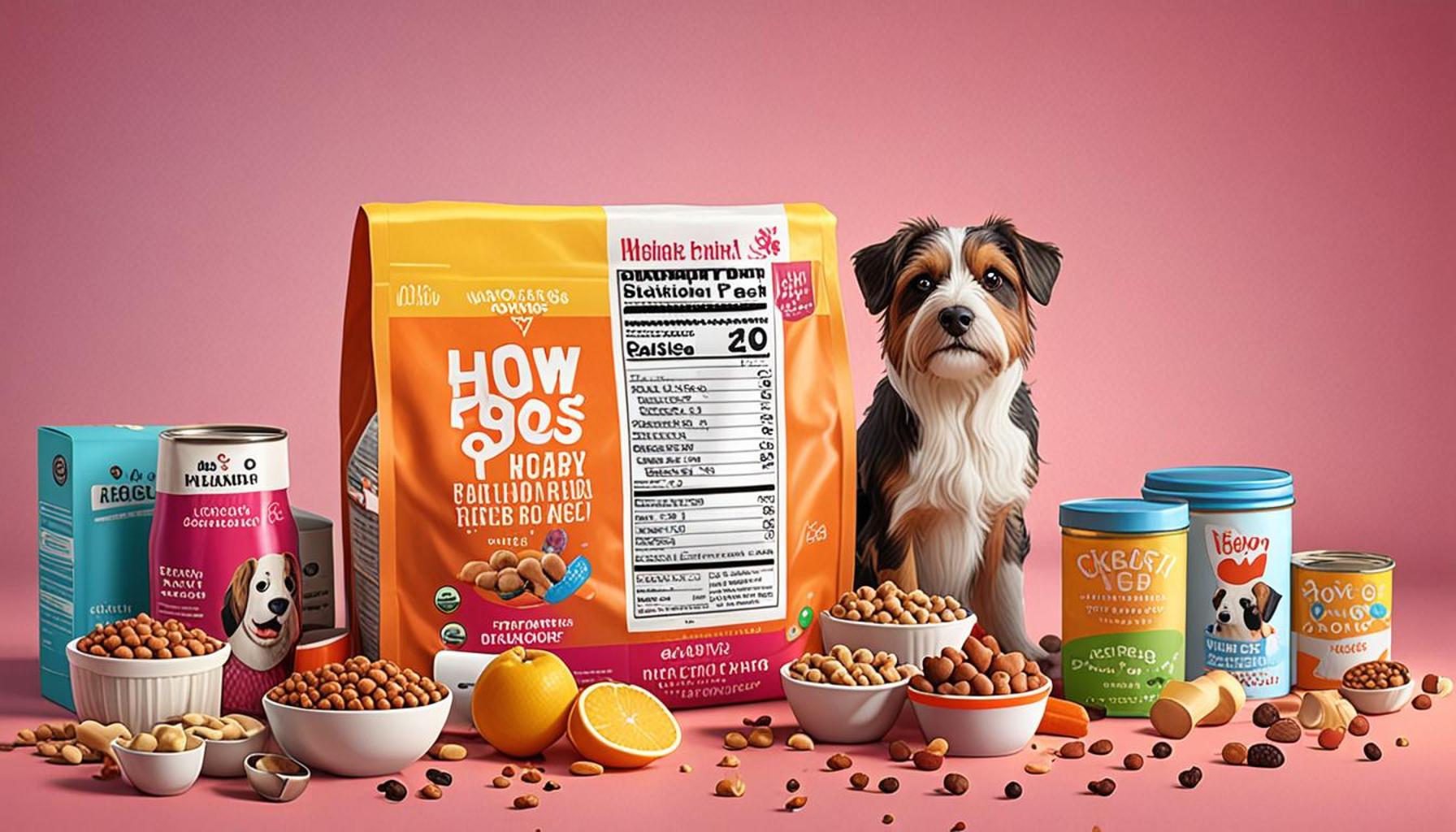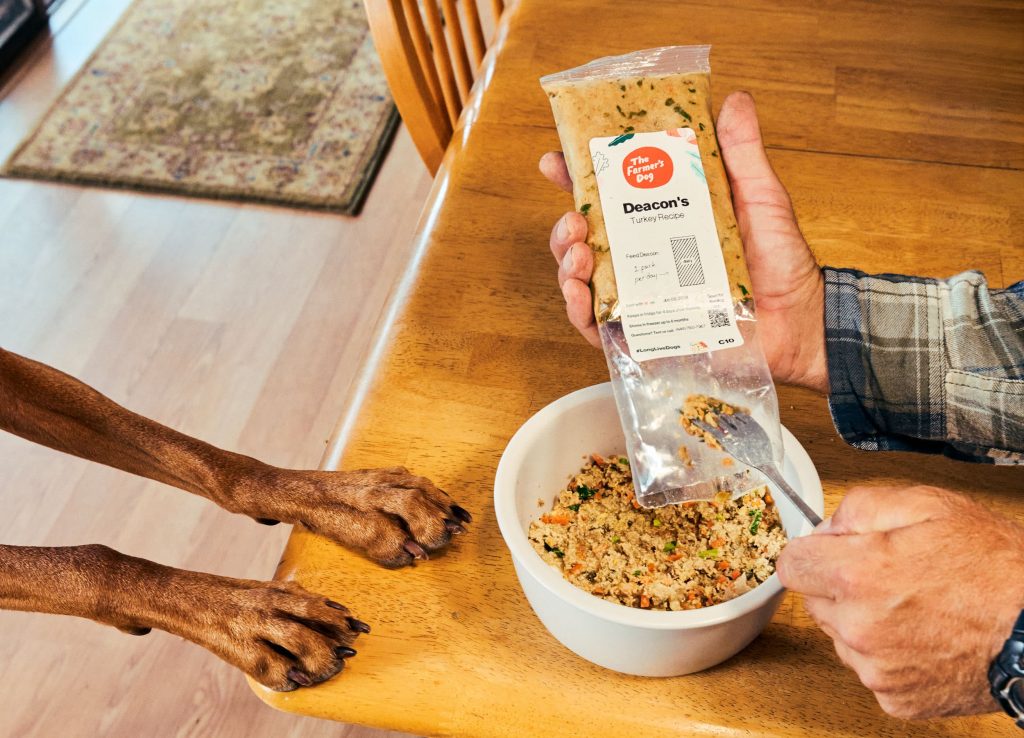How to Read Pet Food Labels: Understanding Ingredients and Nutritional Information

The Importance of Pet Food Labels
Navigating the world of pet nutrition can be overwhelming, especially with the myriad of options on the market. Understanding pet food labels is crucial to ensuring that your furry friends receive the best possible diet. With the right knowledge, you can make informed choices that contribute to their health and happiness.
Pet food labels contain a wealth of information that can guide your purchasing decisions. Here are some key components to pay attention to:
- Ingredients List: The ingredients list reveals what goes into your pet’s food. Ingredients are typically listed in descending order by weight, meaning the first few items are the most abundant in the formula. Look for high-quality protein sources, such as chicken, beef, or fish, as the primary ingredient.
- Nutritional Adequacy Statement: This statement confirms whether the food meets the standards set by the Association of American Feed Control Officials (AAFCO). It will typically indicate if the food is formulated for a specific life stage (e.g., growth, adult maintenance, or all life stages).
- Nutritional Information: Here, you’ll find essential nutrients and their percentages, including protein, fat, fiber, and moisture. For instance, a food with high protein content is often better suited for active or growing pets.
In the United States, pet owners often find themselves swamped by flashy marketing claims. Terms like “grain-free,” “natural,” or “premium” can be enticing, yet they do not always guarantee a quality food product. It’s essential to dig deeper. Ask yourself: Are these claims backed by scientific evidence? For example, while “grain-free” diets are popular and often marketed for pets with grain sensitivities, some studies suggest that they may be linked to heart disease in dogs.
Labels are not just a list of contents; they provide insights into the nutritional value of the food. For example, do you know the difference between animal by-products and by-product meals? Animal by-products can include organ meats and other parts unfit for human consumption, which can be a nutritious component of pet food. By-product meals, however, refer to a rendered product that may contain non-meat ingredients. Understanding these differences can help you make better choices for your pet’s dietary needs. Additionally, consider the significance of first ingredient placement; a high-quality food should list a named meat (e.g., “chicken” rather than “meat by-products”) as the first ingredient.
By learning how to read pet food labels thoroughly, you empower yourself to select foods that align with your pet’s specific needs. Each pet is unique, and their dietary requirements can vary significantly based on age, breed, and lifestyle. Whether you’re a first-time pet parent or a seasoned owner, the information presented here will serve as a compass guiding you toward more informed decisions for your beloved companions. Take the time to educate yourself, and you will not only feel confident in your choices but also enhance your pet’s overall well-being.

DISCOVER MORE: Click here to learn about how environment affects your pets
Decoding the Ingredients List
The ingredients list is one of the most informative sections of a pet food label. Understanding how to read and interpret this list can make a significant difference in your pet’s nutrition. Ingredients are typically listed in descending order by weight, meaning the first ingredient constitutes the largest portion of the food. This is a fundamental point that pet owners should remember. Always look for high-quality protein sources like chicken, beef, or fish at the top of the list as these ingredients are vital for the healthy growth and maintenance of your pet.
However, not all proteins are created equal. Familiarize yourself with what each term actually means. For example, while you might see “meat” or “meat meals,” these can vary greatly in quality. Here are some essential terms to know:
- Named meats (e.g., chicken, salmon): Indicate a specific source of protein.
- Meat by-products: These can include organs, blood, and undeveloped eggs. While some are nutritious, it’s crucial to understand that these are not always the best source of protein.
- Grains (e.g., corn, wheat, barley): Often used as fillers and can trigger allergies in some pets, but they also provide carbohydrates and fiber.
- Vegetables and fruits: While not the mainstay of a pet’s diet, they offer essential vitamins and antioxidants.
Next, consider the significance of the ingredient placement throughout the list. Many manufacturers use ingredients that sound appealing, such as “real meat,” but inspect the overall composition. If the first few ingredients are mostly fillers like corn or wheat, your pet may not be receiving the necessary nutrients. This practice leads many pet owners down the path of less nutritious food.
On the other hand, if you see ingredients like “chicken meal” or “salmon meal” within the first three slots, it indicates a concentrated source of protein. Remember, “meal” refers to the rendered form of a meat that has had its moisture removed, making it nutrient-dense.
Understanding Nutritional Information
The nutritional information section might seem like a simple table, but it holds the key to understanding your pet’s dietary needs. You’ll typically find mandatory nutrient levels, such as crude protein, crude fat, crude fiber, and moisture content. These measurements give you a snapshot of the nutritional content of the food. For example, a product with high protein is often better for energetic or developing pets. Conversely, an older pet may require a food lower in calories but still high in essential nutrients.
Consider checking for additional beneficial components, such as omega fatty acids, glucosamine, and probiotics. These ingredients contribute to healthy skin, joints, and digestion, respectively. By understanding what nutritional information is vital for your pet’s specific stage of life, you can better cater to their needs.
Arming yourself with knowledge about how to dissect pet food labels not only elevates your confidence in your purchasing decisions but also plays a crucial role in enhancing your pet’s longevity and quality of life. It’s time to take control over your pet’s diet and ensure they thrive with the right nutrition!
Understanding pet food labels is essential for making informed decisions about your pet’s nutrition. The first step is to familiarize yourself with the key components of the label, such as the ingredient list and the Guaranteed Analysis. The ingredient list provides a breakdown of what is truly inside the food, while the Guaranteed Analysis gives insights into the nutritional content, including protein, fat, fiber, and moisture levels.
It’s important to look for high-quality ingredients at the top of the list. Ingredients are listed in descending order by weight, meaning the first few listed make up the bulk of the product. Look for real meats or meat meals as a primary ingredient, since they are crucial for your pet’s health. Avoid products that have vague terms like “animal by-products” or artificial preservatives, flavors, and colors.
Checking the Guaranteed Analysis helps you ensure that the diet meets your pet’s specific nutritional needs. For instance, if your pet is a growing puppy or a high-energy dog, you might look for higher protein and fat content. Additionally, understanding the caloric density can help you manage your pet’s weight effectively.
Moreover, don’t forget to assess the presence of any nutritional additives such as vitamins and minerals, which can enhance overall health. Look for additions like omega fatty acids for coat health or probiotics for digestive support. This information can often be found in a separate section of the label, sometimes highlighted as “nutritional support” on the packaging.
In summary, understanding how to read pet food labels equips pet owners with the knowledge needed to choose the most suitable food for their furry companions. Taking the time to research ingredient quality and nutritional information can lead to improved health and vitality for your pets.
| Category | Details |
|---|---|
| Ingredient Quality | High-quality protein sources improve health. |
| Nutritional Additives | Omega fatty acids and probiotics support health. |
LEARN MORE: Click here to discover the effects of training techniques on pet behavior
Assessing Additives and Preservatives
As you delve deeper into the pet food label, your attention should shift to the additives and preservatives that many manufacturers use. While some additives are beneficial for preservation or enhancement of flavor and color, others can be detrimental to your pet’s health. Understanding the purpose and safety of these components is essential for making informed choices.
Preservatives are employed to maintain the freshness of the food over time. Common options include natural preservatives like tocopherols (Vitamin E) and ascorbic acid (Vitamin C). These are generally safe and beneficial, offering antioxidant properties that can aid in the preservation of nutrients. However, synthetic preservatives, such as BHA (Butylated Hydroxyanisole), BHT (Butylated Hydroxytoluene), and Ethoxyquin, have raised concerns among pet owners due to potential links to health issues. It’s advisable to be cautious with brands that rely heavily on synthetic additives.
Similarly, artificial flavors and colors might make pet food more appealing, but they serve little nutritional value. A food that needs these additives may have underlying quality issues. Reading labels carefully can reveal if your pet’s food contains these unnecessary ingredients, which can be a sign to look for a more natural product.
Recognizing AAFCO Statements
The Association of American Feed Control Officials (AAFCO) plays a vital role in standardizing pet food labeling practices across the United States. Look for the AAFCO statement typically found on the packaging, which indicates the food has been formulated to meet or exceed specific nutritional levels established by the AAFCO Dog Food Nutrient Profiles or AAFCO Cat Food Nutrient Profiles. This statement is a seal of assurance, suggesting that the food contains the requisite nutrients for your pet’s age and dietary needs.
However, not all products have undergone feeding trials, which are a more stringent form of testing. You’ll often find labels stating that the food is “complete and balanced,” but without backing from AAFCO trials, you might want to perform a deeper evaluation into the brand’s reputation and quality assurance measures. Brands investing in rigorous testing demonstrate a commitment to pet health that could outweigh mere marketing phrases.
Knowing Your Pet’s Unique Needs
Perhaps the most critical aspect of reading pet food labels effectively is understanding your pet’s individual nutritional requirements. Different pets have unique needs based on age, breed, size, and health status. For example, a growing puppy has distinctly different nutritional demands compared to a senior dog. Similarly, cats and dogs process certain ingredients differently, often requiring distinct formulations to reach optimal health.
Consulting with your veterinarian can provide tailored recommendations catered to your pet. They can advise you on specific ingredients to prioritize or avoid based on your pet’s health history and nutritional status. Further, during your label assessments, consider specialized diets recommended for conditions like obesity, allergies, or sensitivities. The right pet food label assessment can lead you and your pet to the right food that fosters health, vitality, and longevity.
In this era of increasing pet health awareness, pet owners are urged to arm themselves with knowledge about food labels. Such understanding not only enhances your pet’s life but can also shape the industry standards by demanding better food quality and transparency from manufacturers. By knowing what to look for, you ensure your furry friend receives not just any food, but the right food for their unique needs.
DISCOVER MORE: Click here to find out how pet adoption can enrich children’s lives
Conclusion
In conclusion, navigating pet food labels is an invaluable skill that empowers pet owners to make informed decisions about their furry companions’ nutrition. By understanding the significance of ingredients, additives, and AAFCO statements, you can discern quality products from those that may not meet your pet’s specific needs. As we’ve discussed, the choice of ingredients lays the foundation for your pet’s health. Natural, high-quality components should take precedence over fillers and artificial additives.
Recognizing your pet’s unique requirements based on factors like age, breed, and health conditions plays a pivotal role in selecting the right food. Consulting with a veterinarian can provide tailored advice, ensuring that your pet receives the nutrients necessary for optimal growth, maintenance, and longevity. Moreover, as consumer awareness rises, it can propel the pet food industry towards higher standards of transparency and quality.
Ultimately, your investment in understanding pet food labels fosters not only a healthier life for your pet but also contributes to a broader culture of accountability and quality within the industry. Arm yourself with knowledge, ask questions, and demand the best for your beloved animal companion. The journey of making informed dietary choices starts with you—take the time to ensure what’s in your pet’s bowl truly counts.



